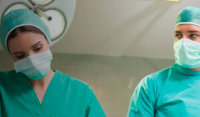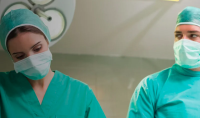Anaesthesia | Trauma | Thoracolumbar spinal injuries



Thoracolumbar spinal injuries
Session overview
Description
This session describes the pathophysiology surrounding thoracolumbar spine injury, the physiological consequences of such trauma and the management of unstable injury.
Learning objectives
By the end of this session you will be able to:
- describe the gross anatomy of the thoracic and lumbar spine
- identify patients at risk of thoracolumbar spinal injury and how to assess them
- describe the physiological manifestations of acute thoracolumbar spinal cord disruption
- explain the management principles following thoracolumbar injury and commonly occurring complications
Thoracolumbar injuries are usually the result of trauma to the thoracic and lumbar spine. The nature of the trauma can range from high-energy road traffic collisions to simple falls, especially in older patients with coexisting osteoporosis.
Thoracolumbar fractures may also occur spontaneously in patients with other pathological comorbidities including osteoporosis or spinal neoplasms and metabolic diseases.
This session will focus on injuries to the thoracolumbar spine sustained through trauma.
- Anaesthesia | Physiology | Mechanics of Ventilatio...
- Posted By eIntegrity Healthcare e-Learning
- Posted Date: 2025-02-21
- Location:Online
- This session continues to look at respiratory mechanics, including lung compliance, the role of surfactant and the factors that determine whether airflow is laminar or turbulent. Respiratory function tests are also explained
- Anaesthesia | Physiology | Ventilation/Perfusion A...
- Posted By eIntegrity Healthcare e-Learning
- Posted Date: 2025-02-21
- Location:Online
- This session describes how and why ventilation and perfusion vary in the healthy lung. Causes of hypoxia, such as hypoventilation, increased dead space and shunt, are discussed to help the trainee explain and manage hypoxia clinically.
- Anaesthesia | Physiology | Pulmonary Ventilation: ...
- Posted By eIntegrity Healthcare e-Learning
- Posted Date: 2025-02-21
- Location:Online
- This session covers the measurement and clinical importance of lung volumes, including functional residual capacity and dead space. Information regarding the performance and interpretation of flow-volume loops is also included.
- Anaesthesia | Physiology | Co2 Carriage in Blood a...
- Posted By eIntegrity Healthcare e-Learning
- Posted Date: 2025-02-21
- Location:Online
- This session covers the physiology of how carbon dioxide is carried by blood, including its conversion into bicarbonate ions and the role of the red blood cell and haemoglobin in this process. The session also describes how buffers work, and the fundament
- Anaesthesia | Physiology | Function of Haemoglobin...
- Posted By eIntegrity Healthcare e-Learning
- Posted Date: 2025-02-21
- Location:Online
- This session focusses on the function of haemoglobin in oxygen (O2) carriage from the lungs to other tissues where cells are supplied with the O2 required for oxidative phosphorylation in the mitochondria. We will cover the structure




